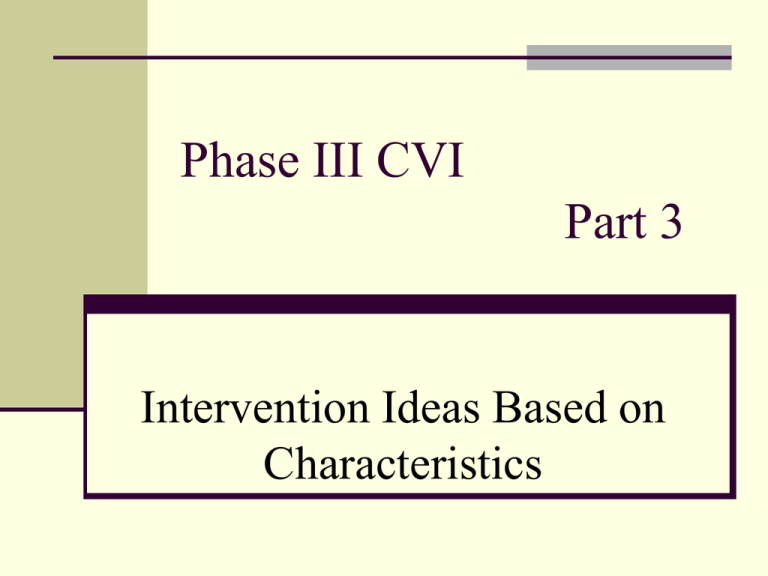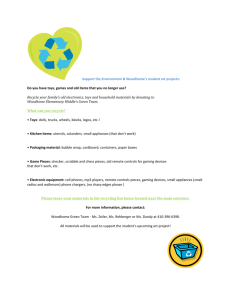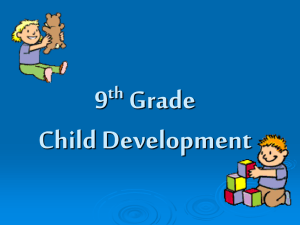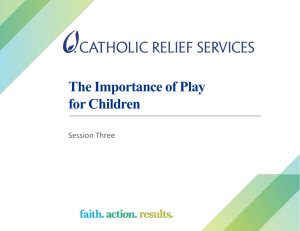Phase III CVI Part 3 Intervention Ideas Based on Characteristics
advertisement

Phase III CVI Part 3 Intervention Ideas Based on Characteristics Intervention Ideas Based on Characteristics: Color Use color to direct a child’s attention and give color information to help focus attention. Add color to give information; color helps sort out what information is important to look at. Use color to direct a child’s attention (i.e.: providing color cues such as “the red exit sign”; highlight writing lines to direct attention). On backgrounds remember color is an anchor; if the background is a very bright color it may confuse the child as to what you are really asking them to look at. Black Rectangle outlined in a shiny gold metallic paper Black square outlined in a shiny red metallic paper Intervention Ideas Based on Characteristics: Movement Use movement to initiate looking at a distance. Movement can still be a distractor, especially in the classroom. When a child is working, position activity in the classroom behind the child. Consider using tri-fold boards to block out distractions and other activity naturally occurring around the child. Intervention Ideas Based on Characteristics: Fields Typically lower visual fields are the last to resolve. Consider when setting up the play/work environment (i.e.: think about where work is placed in the classroom). Consider visual fields when a child appears “clumsy” and may be having challenges moving around their environment. It is important to teach a child scanning to ensure all visual fields are used. Intervention Ideas Based on Characteristics: Complexity If an activity or task is difficult try to make the visual target and environment less complex. Make sure to always consider complexity (i.e.: of the environment, sensory input to the individual, and the item being looked at – especially if it is 2 dimensional). Keep working space simple and free from lots of visual distractions When presenting new information it should be presented against a solid, black background. Intervention Ideas Based on Characteristics: Complexity continued: Two dimensional items reduce the amount of information on the page to reduce visual clutter. enlarge the print, use a magnifier, or use pages with less information on them. Always consider visual fields, especially in highly novel and/or over stimulating environments. May need orientation (verbal and physical) to the setting Assistance from an adult or peer Possible use of a cane. Intervention Ideas Based on Characteristics: Complexity continued: Complexity often most difficult characteristic of CVI to resolve. Look at ways to simplify the task. Ways that a task can be complex too many toys out at one time; too many toys in front of the child; using toys with lights, sounds, and movement; performing difficult motor tasks while asking the child to use their vision; too much information on the page of material; being in a new environment with lots of people, objects and sounds. Intervention Ideas Based on Characteristics: Distance Preview environments with the child (walk around and point out important features) to help them form “a picture” in their visual memory. Use bright, naturally occurring landmarks to help orient child so they know where they are and where they are going. Use visual cues and descriptors to help orient the child and provide information about what they are “seeing”. Intervention Ideas Based on Characteristics: Novelty When teaching new information or presenting new toys use familiar objects and colors to introduce material. Use touch to allow the child to learn about new items and subsequently visually attend to the item or tasks. Use the same, or familiar, materials in the home and/or class. Familiarity helps the child visually attend. Repetition helps a child solidify visual memory. Intervention Ideas Based on Characteristics: Visual Motor Make sure when the child is doing something with their hands they are also using their vision too. Writing is a very difficult activity because it is both motor and vision intensive. You may want to look at alternate ways to complete work until the child is more comfortable with the skill (i.e.: dictation). Avoid hand over hand; use modeling and encourage the child to reach independently.





